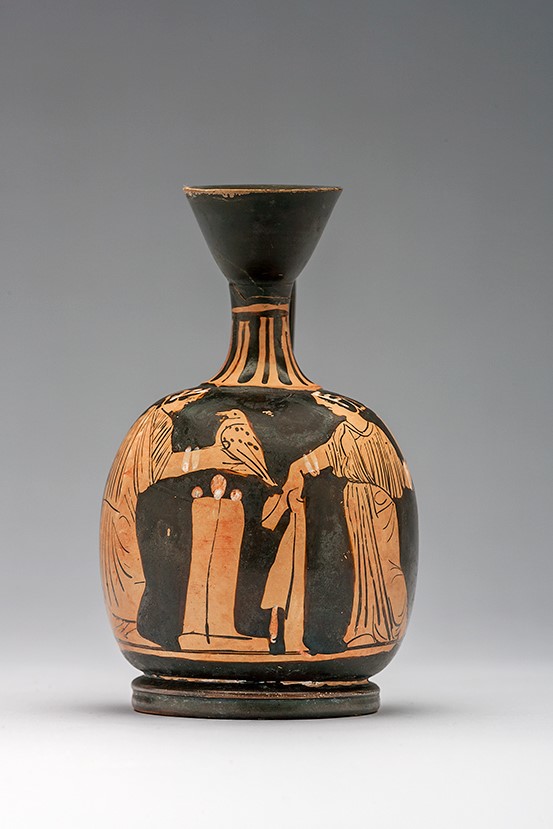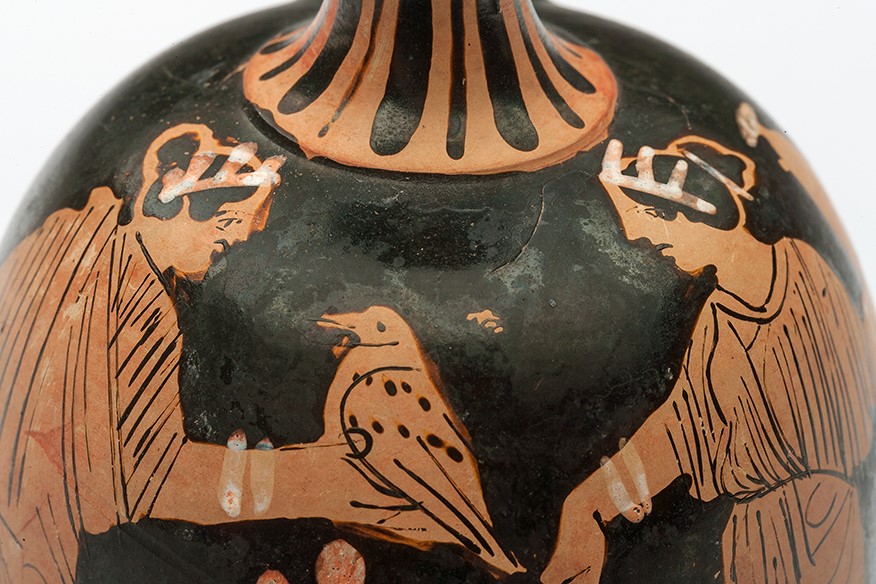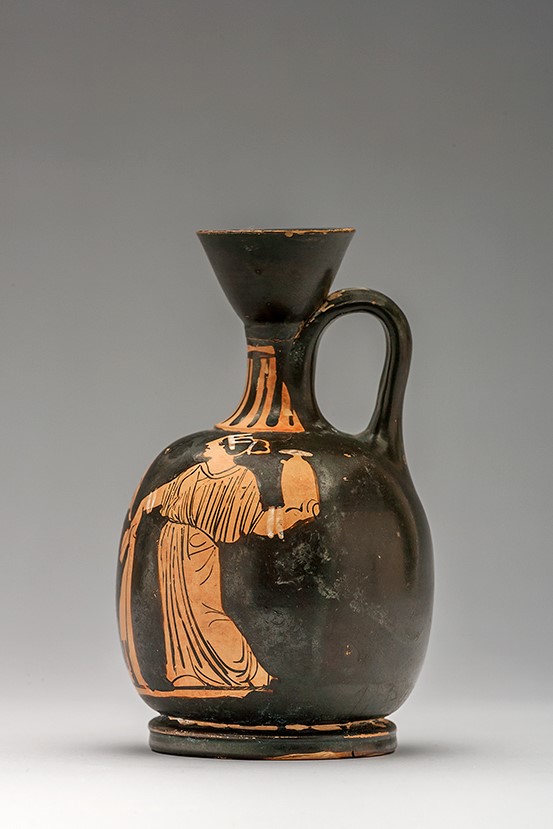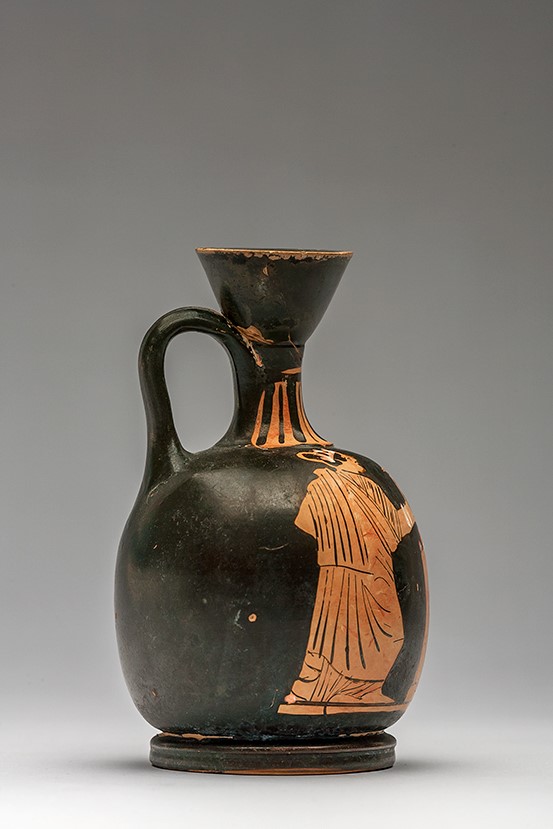Acquisition number: 1973.11
Corinthian Red-Figure Squat Lekythos.
Intact and in good condition. Pale, smooth, hard-fired clay, barely visible. The handle is of segmental section; ring foot, its outer face in two degrees, the inner concave and offset from the underside of the floor. Fairly lustrous black glaze. The underside is reserved and reddened.There are also traces of reddening on the other reserved areas; it was added after the application of the white. The mouth is completely painted, inside and out.
On the body are two women about a stele. The woman on the left (dressed in chiton and himation) holds forward a bird in her right hand. The woman on the right (in chiton) holds a sash in her right hand and an alabastron in her left. There are three eggs on the top of the stele. White was added for the left woman’s stephane, bracelet and a dot at the bottom left corner of her skirt; for the eggs on the stele; for the right woman’s stephane and hair ribbons, bracelets, the top of the alabastron and the ribbons at the bottom of the sash. On the neck, tongue pattern.
Title: Corinthian Red-Figure Squat Lekythos - 1973.11
Acquisition number: 1973.11
Author or editor: J.R. Green
Culture or period: Corinthian Red-Figure.
Date: Early 4th century BC.
Material: Clay - Terracotta
Object type: Pottery - Red-figure
Dimensions: 63mm (w) × 105mm (h)
Origin region or location: Greece
Origin city: Corinth.
Display case or on loan: 4
Keywords: Greek, Classical, Corinthian, Red Figure
J.R. Green with B. Rawson, Catalogue of Antiquities in the Australian National University, A.N.U. (Canberra, 1981) 40.
1973.11
Corinthian Red-Figure Squat Lekythos
Cyril Henry Leach Bequest by courtesy of the Trustees of the British Museum. Ht 10.5cm; diam. 6.3cm.
Intact and in good condition. Pale, smooth, hard-fired clay, barely visible. The handle is of segmental section; ring foot, its outer face in two degrees, the inner concave and offset from the underside of the floor. Fairly lustrous black glaze. The underside is reserved and reddened.There are also traces of reddening on the other reserved areas; it was added after the application of the white. The mouth is completely painted, inside and out.
On the body are two women about a stele. The woman on the left (dressed in chiton and himation) holds forward a bird in her right hand. The woman on the right (in chiton) holds a sash in her right hand and an alabastron in her left. There are three eggs on the top of the stele. White was added for the left woman’s stephane, bracelet and a dot at the bottom left corner of her skirt; for the eggs on the stele; for the right woman’s stephane and hair ribbons, bracelets, the top of the alabastron and the ribbons at the bottom of the sash. On the neck, tongue pattern.
Early fourth century BC. The quality of the glaze is remarkably good by normal Corinthian standards, and is not readily distinguishable from that of Attic.
For some generally similar squat lekythoi, see S. Herbert, Corinth VII.4. The Red-Figure Pottery (Princeton 1977) pll. 23-24, nos 145-146.
The squat lekythos became increasingly popular during the latter part of the fifth century, and by the early fourth, it had completely ousted the lekythos of the tall, standard shape. The scene has the normal funerary attributes, such as the eggs (as symbols of fertility and new life), sashes and the like such as one also finds on South Italian vases. The drawing has absorbed the advances of the later fifth century in such details as the treatment of the drapery over the left leg of the right-hand figure, but overall has reverted to a simpler, more hasty style.
J.R. Green with B. Rawson, Catalogue of Antiquities in the Australian National University, A.N.U. (Canberra, 1981) 40.



